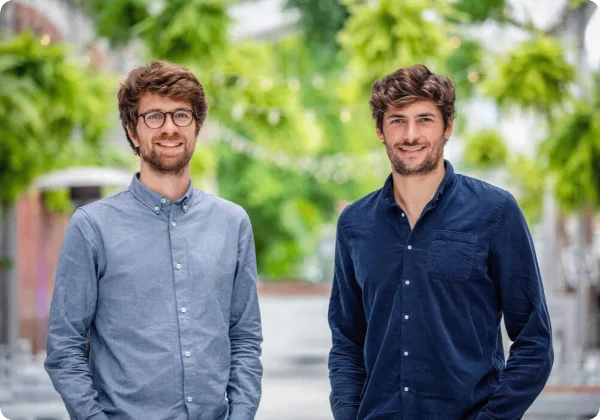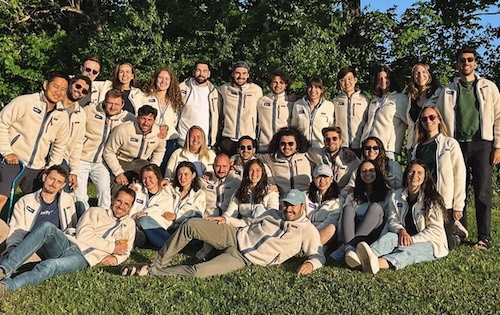Zeffy is a company that provides zero-fee fundraising and donor management software for nonprofits. Pulse 2.0 interviewed Zeffy co-founder and CEO François de Kerret to gain a deeper understanding of the company.
Formation Of The Company

How did the idea for the company come together? de Kerret said:
“After moving to Québec, I wanted to volunteer and find a way to help out in my new community. But I quickly realized it was harder than I thought to get involved in a meaningful way. That disconnect really struck me: there were so many people ready to give their time or money, and so many nonprofits that needed help, but no easy way to bring them together.”
“So, I reached out to Thibaut Jaurou, who’s now our CTO. We started building a tool to bridge that gap. Once we began talking to nonprofits, we uncovered something even bigger: millions of organizations were being held back by expensive, outdated tools.”
“That’s how Zeffy started. We wanted to give every nonprofit access to powerful technology, without making them pay for it. Today, we’re proud to support over 50,000 nonprofits, and they’ve raised more than $1 billion through Zeffy, all without paying a single fee.”

Core Products
What are the company’s core products and features? de Kerret explained:
“Zeffy is the only fundraising platform in North America that’s 100% free, including payment processing.”
“Nonprofits use Zeffy to run donation campaigns, sell event tickets, launch peer-to-peer fundraisers, manage memberships, and stay connected to their donors. All with zero fees.”
“Our goal is to remove as many barriers as possible so nonprofits can focus on what matters most: their mission.”
Challenges Faced
Have you faced any challenges in your sector of work recently? How did you overcome them? de Kerret acknowledged:
“Nonprofits are facing a lot right now—delays in public funding, rising costs, and increased demand for services. At the same time, donors have become more cautious, especially after the stock market volatility tied to tariff news.”
“We wrote about why donations may have been lower than usual and what nonprofits can do about it. Many high-income donors pulled back, and that had a direct effect on donation volume.”
“Our advice has been simple: be transparent. Don’t launch a campaign unless you need to. And when you do, clearly explain the urgency. Donors appreciate honesty, especially in uncertain times.”
“From our side, we’re making sure nonprofits have tools that help them stay agile, so they can act fast when the timing is right.”
Evolution Of The Company’s Technology
How has the company’s technology evolved since its launch? de Kerret noted:
“We started with one simple goal: make online fundraising easier and more affordable for nonprofits. But as we listened to the thousands of organizations using Zeffy, it became clear there was a bigger need.”
“Today, we’re building something much more ambitious—a full operating system for nonprofits. We’ve gone beyond fundraising to include tools for donor management, CRM, and soon, financial operations—all to help nonprofits make the biggest impact possible.”
Significant Milestones
What have been some of the company’s most significant milestones? de Kerret cited:
“Crossing $1 billion in donations processed was a big one, not because of the number, but because of what it means. That’s over a billion dollars that went directly to nonprofits and their missions, not to fees.”
“I’m also proud that we’ve reached this point with a team of fewer than 40 people. It shows what’s possible when you build for efficiency and stay focused on impact.”
Customer Success Stories
Can you share any specific customer success stories? de Kerret highlighted:
“There are so many, but two come to mind.”
“Loose Ends started as a small initiative—two friends finishing knitting projects for grieving families. When they switched to Zeffy, they saved over $1,700 in fees. That was enough to hire their first part-time employee and grow internationally.”
“Another is Nineveh Rising. They’d tried six platforms before landing on Zeffy. With us, they kept $2,742 in what would have been fees, and finally got access to their donor data. That helped them raise $54,000—and keep all of it.”
“These stories are reminders that even small savings can have a big impact.”
Total Addressable Market (TAM)
What total addressable market (TAM) is Zeffy pursuing? de Kerret assessed:
“There are more than 1.5 million nonprofits in North America. Most are small or midsize, and they’re exactly who we serve. They don’t have huge budgets. They can’t afford to lose 5–10% of every donation to platform fees. That’s where we come in.”
Differentiation From The Competition
What differentiates Zeffy from the competition? de Kerret affirmed:
“Most platforms take 5 to 10 percent of donations in fees. For a nonprofit, that’s a big deal. Many rely on volunteers and operate with tight budgets, so losing even a few percent can limit their ability to grow.”
“At Zeffy, we’re 100% free, including payment processing. That model isn’t just different—it’s built for trust. Donors know every dollar they give goes directly to the cause, and nonprofits get to keep more of what they raise.”
Future Company Goals
What are some of Zeffy’s future goals? de Kerret emphasized:
“By 2026, we want to support 400,000 nonprofits and help them raise $4 billion—without taking a dime in fees.”
“To get there, we’re growing our team, investing in automation, and expanding internationally. But our north star stays the same: build the best tools for nonprofits and keep them free.”
Staying Efficient
Your platform has processed over $1 billion with a lean team of just 35 people. How do you stay efficient while scaling so quickly? de Kerret concluded:
“Our business model forces us to stay efficient. Since we’re funded by optional tips from donors, we have to be smart about every dollar we spend.”
“We’ve prioritized simplicity in product design and automation in operations. AI helps us scale customer support, personalize donor interactions, and accelerate product development—without bloating the team.”
“Our goal is to help nonprofits work smarter. That starts by holding ourselves to the same standard.”


